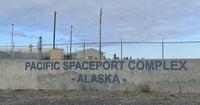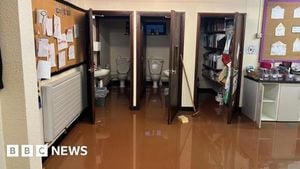On a windswept morning in May 2025, President Donald Trump stood before a sprawling map of North America, the words "Golden Dome" emblazoned above it, and made a sweeping promise: "I promised the American people that I would build a cutting-edge missile defense shield to protect our homeland from the threat of foreign missile attack." With that declaration, the Trump administration set in motion one of the most ambitious—and secretive—defense projects in recent U.S. history: the Golden Dome missile defense system.
According to Reuters, the Pentagon had already begun seeking proposals from defense contractors as early as April, inviting them to design a network capable of intercepting intercontinental ballistic missiles (ICBMs) during their "boost phase"—that brief, vulnerable window just after launch, when a missile climbs slowly through the atmosphere. It's a radical departure from current missile defenses, which typically attempt to intercept threats only after they've reached the cold vacuum of space.
The Golden Dome's architecture, as revealed in leaked Pentagon slides and subsequent reporting by BBC and The Washington Times, is nothing if not audacious. The plan envisions a four-layered shield: a space-based intercept layer of hundreds of satellites bristling with sensors and interceptors, buttressed by three additional land-based defensive layers. The second layer will enhance the existing Ground-Based Midcourse Defense (GMD) system, which already deploys interceptors in California and Alaska. The third will add five new land-based launch sites—three in the continental U.S., two in Hawaii and Alaska—designed to target missiles still in space. The fourth, called "Limited Area Defence," will focus on protecting population centers, using new radars, a "common" launcher for current and future interceptors, and potentially the Patriot missile defense system.
"We helped Israel with theirs, and [it] was very successful, and now we have technology that's even far advanced from that," Trump said, referencing Israel's Iron Dome system, which has famously intercepted thousands of short-range rockets since its 2011 debut. But where Iron Dome was built for city-sized threats, Golden Dome aims to shield the vast expanse of the continental United States—and possibly Canada—from everything from ICBMs to hypersonic and cruise missiles launched by adversaries like China, Iran, North Korea, or Russia.
Yet, for all its ambition, much about Golden Dome remains shrouded in secrecy. As reported by Politico and The Atlantic, the Pentagon has gone to unusual lengths to restrict public discussion. At the 2025 Space and Missile Defense Symposium in Huntsville, Alabama, officials reportedly banned open conversation about Golden Dome, relegating it to a closed-door summit off the main agenda. "We have to be able to share with the American public what we are intending to do with Golden Dome for America," Ret. Army Lt. Gen. Daniel Karbler told The Washington Times. "We gotta share with the industry what the architecture is going to look like. We have to share with the services what is going to be called upon for their forces. We have gotta do a good job at just communicating." A Defense Department official, however, insisted that "it would be imprudent for the Department to release further information on this program during these early stages," citing operational security and concerns about espionage from rivals like Russia and China.
Still, details have trickled out. Reuters obtained a government-prepared slideshow presented to defense contractors, revealing the system's layered structure. According to CNN and additional reporting by The Ottawa Citizen, the Pentagon has scheduled the first major test of Golden Dome for the fourth quarter of 2028—timed, perhaps not coincidentally, just before the next presidential election. The test is expected to involve both the system's sensors and its weapons, but unnamed defense officials remain skeptical of the project's feasibility, warning, "a lot of money could be spent trying to make this work, and then it might not even meet testing requirements or do what they want it to do."
Funding, unsurprisingly, remains a major sticking point. As detailed by Reuters and BBC, Republican lawmakers have proposed an initial $25 billion investment for Golden Dome as part of a broader $150 billion defense package. But the money is tied to a contentious reconciliation bill facing stiff opposition in Congress. Meanwhile, President Trump has selected a design and named a leader for the program, which is estimated to cost a staggering $175 billion in total.
The project has drawn interest from some of the biggest names in aerospace and defense. Companies linked to Golden Dome include SpaceX, Palantir, Anduril, L3Harris Technologies, Lockheed Martin, and RTX Corp. L3Harris, for instance, has poured $150 million into a new facility in Fort Wayne, Indiana, to build Hypersonic and Ballistic Tracking Space Sensor satellites—technology that could be adapted for Golden Dome. Many early systems are expected to be drawn from existing production lines. Yet, as Reuters noted, recent slides omitted mention of SpaceX, following a public falling out between Trump and Elon Musk. Instead, Lockheed Martin, Northrop Grumman, and Boeing have emerged as key players in the race to build the system's core components.
On the ground, preparations are already underway. On August 6, 2025, Alaska Aerospace Corp. published a request for information to contractors for building temporary housing on Kodiak Island, intended to support the influx of workers needed for Golden Dome. The planned facilities at the Pacific Spaceport Complex Alaska will feature separate housing for men and women, exercise rooms, dining, showers, and laundry—enough to support between 150 and 500 people, with a planning figure of 250. This mirrors arrangements made in 2019, when the U.S. government and Israel Defense Ministry set up similar temporary housing for missile defense tests. Alaska Aerospace Corp. expects to issue a formal request for proposals by the end of 2025.
The Golden Dome’s reach may soon extend beyond U.S. borders. As reported by The Ottawa Citizen, Canada has removed longstanding restrictions and roadblocks to join the project. During a July 2025 visit to NORAD headquarters in Colorado, Canadian Defense Minister David McGuinty declared, "The threat environment has drastically changed and Canada needs to be prepared." Trump, for his part, quipped that Canada could join at no cost if it ceded its sovereignty and became the 51st state—a remark that drew both laughter and consternation in Ottawa.
Not everyone is convinced the project will succeed. The Golden Dome’s technological ambitions echo Ronald Reagan’s "Star Wars" Strategic Defense Initiative, announced in 1983 and ultimately abandoned due to sky-high costs, technological obstacles, and arms control concerns. "We will truly be completing the job that President Reagan started 40 years ago, forever ending the missile threat to the American homeland," Trump proclaimed. But history offers a cautionary tale: SDI failed because it was too expensive, too ambitious, and too difficult to test—pitfalls Golden Dome must avoid if it hopes to become reality.
Despite the secrecy, the skepticism, and the staggering price tag, the Golden Dome project is already reshaping the U.S. defense landscape. Whether it will deliver on its promise to “forever end the missile threat” remains to be seen, but for now, the race to build America’s next shield is well and truly underway.






